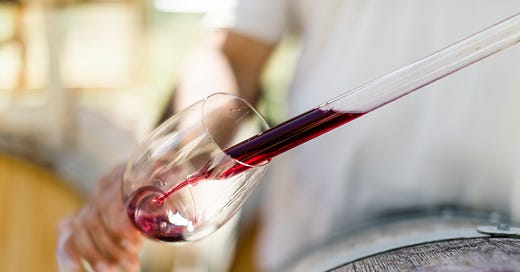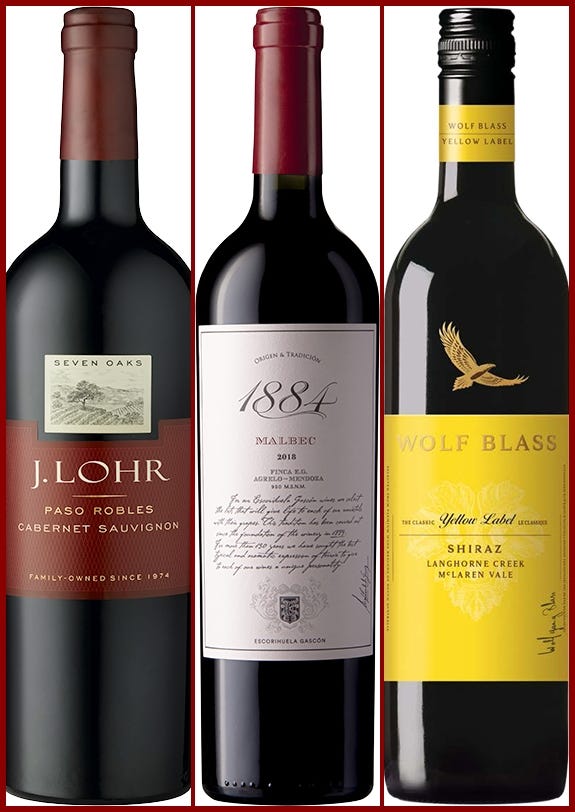Hello,
Since the newsletter was launched, the total number of wine picks identified has grown to over 250 (from over 3500 wines listed in B.C. Government liquor stores).
To save you having to go back through the newsletters, to find a particular wine, I’ve reshuffled them by country and ordered them by score from highest to lowest for each country. So you can see which wines have scored the highest in each country. Each month I will spotlight a particular style from one or more countries. This month it’s the Ripe, Fruit Forward Reds from Australia, Argentina and Spain.
So, if you are a paid subscriber, any time you want to check to see wines in this style from these countries you can just click on this posting.
I have not included the prices but as with the monthly newsletters, there is a link provided for each wine that you can click to quickly check the current price and availability.
Note that this way of organizing the wines is not going to replace the regular monthly newsletter, it’s a bonus for paid subscribers. The regular monthly newsletter will also come out as usual.
What Do We Mean by Ripe Fruit Forward Reds?
This style is most typical of wines from the New World (North America, South America, Australia, South Africa). The fruit flavours here are ripe or even jammy (though still a dry wine) with rounded fruit flavours like black cherry, plum or raspberry and with subtle complementary dryness of tannins and a lushness to the mouthfeel. They are relatively bigger bodied, concentrated, oak influenced and often have higher levels of alcohol.
California Cabernet Sauvignon and Zinfandel, Australian Shiraz, and Argentinian malbecs would be examples of this style. Wines you might know in this style that are widely available in B.C. would include J. Lohr Seven Oaks Cabernet Sauvignon, 1884 Escorihuela Malbec or Wolf Blass Yellow Label Shiraz.
Notes on Wine Scores
The 100 point wine rating system is the most commonly used and known rating system so I use if for the wines I review for this newsletter. It was established and popularized in the 1980s by the American wine writer Robert Parker.
The idea was to liken the wine’s score to a scale that was familiar to most people, namely their school exams. So you can think of it as a metaphor i.e. “It’s like a wine took and exam and this is the score it got”. If you have ever looked around for 90 point wines, then you have used ratings. The problem is that it is very familiar to most, it doesn’t really transfer over to wine that well. For starters, the 100-point scale actually starts at 50 points. Scores below that are for wines deemed faulted.
In practice, most reviewers won’t include wines somewhere in the low 80s. So it’s really a 15 to 20 point scale, which I think is a range that’s a better fit for evaluating wine. I don’t include wines below 86 because these are wines beginning to contain some negative aromas and flavours and I don’t feel I can recommend them at any price. For wines that I might score below that, I don’t see the point of giving a harsh or snarky review. It doesn’t do the consumer or the producer any particular good.
Most importantly, a wine review is not just about the score, that’s just one aspect of a good wine review. A wine review should be a composite picture. The description of the wine’s flavours and aromas should be another part as well as other relevant background information and clear, evocative writing that’s informative but doesn’t go over the top and lose or annoy the reader. Here is one of the best descriptions I have heard about what a wine review should be, written by Mike Steinberger.
“The point of a tasting note is to tell the story of a wine - with brevity and clarity, and to render a verdict and score on it that includes an explanation as to why.”
So here is a rough guide to the scores I use but keep in mind that although the 100 point scale (really 15) gives the impression of precision, and though the assigned score is not given casually, the measuring instrument is the human palate not a micrometer.
85-89 wines are ‘good’ to ‘very good’
90-94 wines are ‘superior’ to ‘exceptional’.
95-100 wines that are benchmark examples of their style, grape or region. You won’t see that many scores in this range here because the wines tend to be more expensive than $30.00/Bottle and the newsletter focuses on wines $30.00 and under.
But enough of that, on to the wines…





